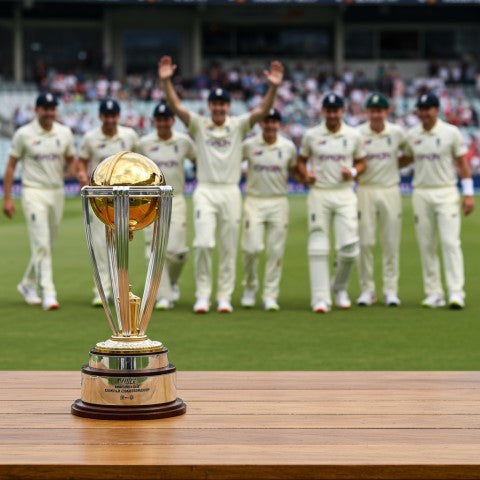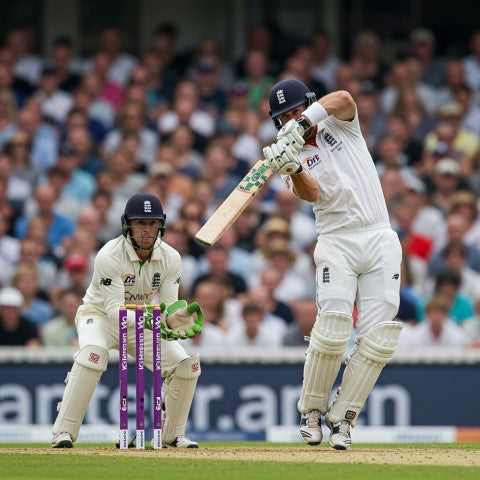Faf du Plessis: Leadership, Longevity, and One Last Charge

Nobody expected Faf du Plessis to be wearing a different jersey this season. After two solid years as captain at Royal Challengers Bengaluru, most imagined he would either retire with the red cap or quietly slip into a mentorship role at the franchise. But the IPL doesn’t do sentimental goodbyes. After being released by RCB ahead of the 2025 auction, du Plessis found himself picked up by Delhi Capitals — not as a marquee signing, but at base price, tucked in among a young squad dominated by flair, unpredictability, and raw talent.
There was scepticism. Delhi weren’t short of batting firepower, and Faf’s recent strike rate hadn’t been blistering. Why pick a 40-year-old to fill a slot that could go to a rising domestic star? But as the season unfolded, it became clear that Delhi weren’t just buying runs — they were buying time. Time at the crease, time in the dressing room, time in the heads of younger players still figuring out the rhythms of pressure cricket.
While his batting numbers didn’t make headlines, his presence did. He anchored innings, covered gaps when others floundered, and even captained the side when Axar Patel was ruled out late in the campaign. Faf du Plessis didn’t just slot in — he led, instructed, and stabilised. The following sections examine how this unassuming purchase turned out to be one of Delhi’s most quietly influential assets of the season.
1. The Move to Delhi Capitals: Repositioning Purpose
When Delhi Capitals picked up Faf du Plessis at the 2025 auction, it barely registered beyond the ticker tape. His career had already entered its reflective phase — a long way from when he was crunching centuries in ODIs or reverse-scooping death overs in his Chennai Super Kings days. But Delhi, whose batting order had regularly imploded in previous seasons, knew exactly what they were doing. They weren’t chasing box office. They were investing in ballast.
Faf wasn’t brought in to set Powerplays alight. He was there to play a specific role — anchor, assess, adapt — and to act as a cricketing buffer between Delhi’s top-heavy aggression and their middle-order volatility. Paired alongside the likes of Prithvi Shaw and Jake Fraser-McGurk, both known for their impulsive strokeplay, Faf’s job was to slow the heartbeat of the innings without killing its momentum.
He slotted into the top order quietly, with neither the fanfare of a marquee international nor the buzz of an uncapped Indian breakthrough. But within three matches, the impact was visible. Delhi were no longer going from 90/1 to 128/7 in a collapse spiral. Faf was the difference. Even when he didn’t score heavily — and there were innings where he crawled through his 20s — his mere presence calmed the players around him.
What Delhi understood, and what many missed, is that the IPL isn’t always about stats. It’s about situational intelligence. Faf didn’t just bring his bat — he brought the experience of 300+ T20s, three IPL franchises, and two decades of captaining egos, emotions, and expectations. You can’t put that in a stat sheet, but you can feel it when the dressing room stops panicking at 3 for 2.
2. Captaincy Without the Title: Stepping In, Holding Fort
There’s a certain irony in how Faf du Plessis became Delhi’s de facto captain. Officially, he was vice-captain, deputising under Axar Patel, who had taken over after David Warner’s retirement from franchise cricket. But when illness sidelined Axar in the closing stages of the campaign, Faf’s elevation was inevitable. And just like that, the man nobody thought would play a leadership role this season found himself calling the shots in must-win games.
The change was subtle but immediate. Field placements were sharper. Bowling plans weren’t just reactive, they were anticipatory. During a tight mid-table scrap against Punjab Kings, Faf brought Kuldeep Yadav into the attack early to expose the left-handed Shashank Singh — a move that paid off within two deliveries. In another match, he held back Khaleel Ahmed until the final three overs, targeting Gujarat Titans’ shaky lower-middle order. The margin of victory? Four runs.
But the leadership wasn’t confined to tactics. His interactions with bowlers at the top of their mark were calm and instructional. His decisions at the toss showed an awareness of dew patterns and pitch fatigue. And his ability to shield younger players from media noise during Delhi’s mid-season slump gave the team a cushion to regroup.
Delhi didn’t make the playoffs, but their late-season performances under Faf were significantly more cohesive. They stopped leaking soft runs. They stopped swinging mindlessly. And most tellingly, they stopped playing as if chaos was inevitable. That shift doesn’t happen by accident. It happens when someone in the room knows what the pressure feels like — and knows how to carry it.
3. With the Bat: Understated, But Timely
Let’s not overstate the numbers. Faf du Plessis wasn’t a run machine in 2025. Across nine innings, he scored 202 runs at a strike rate hovering around 124 — respectable, but hardly spectacular. He didn’t notch up any fifties after the first fortnight, and he was dismissed cheaply more than once when trying to accelerate against spin. But as always with Faf, the value didn’t lie in aggregate. It lay in when and how he delivered.
One of his best performances came in a low-scoring scrap against Rajasthan Royals, where Delhi’s top order had crumbled on a sticky pitch in Guwahati. Walking in at 13/2, Faf absorbed pressure, rotated strike, and compiled a 32-ball 38 that looked completely ordinary on paper — until you remembered the team total was just 138. Delhi won by 9 runs. Faf’s innings, statistically dull, was match-defining.
He also added small but crucial cameos that bolstered Delhi’s finishes. An 18* off 9 against LSG with two overs left; a 27 off 21 against SRH when nobody else passed 25. These were not innings destined for YouTube compilations. But they were innings that protected net run rate, sealed nervy wins, and pushed Delhi closer to playoff contention.
Faf wasn’t trying to be the hero. He was trying to be the hinge — the one who holds things together so someone else can swing the door open. And even in a season where he wasn’t scoring at a breakneck pace, that role made all the difference.
4. Mentorship in Motion: The Dressing Room Catalyst
It’s easy to overlook a mentor’s influence in franchise cricket. Most conversations orbit around coaches or marquee Indian players, but within Delhi’s 2025 setup, Faf du Plessis became the axis around which calmness spun. Not through speeches or slogans — but through presence, preparation, and precision.
Younger players spoke of Faf as someone who didn’t lecture — he demonstrated. During net sessions, he focused not on hitting big shots but on discussing match simulations — what to do at 84/4 on a slow wicket, how to rotate when pace-off bowlers dominate, when to take timeouts proactively. He treated practice like rehearsal, not escapism.
This had a noticeable trickle-down effect. Abishek Porel, batting lower in the order, developed a better sense of pacing his innings, crediting Faf for pushing him to focus on game awareness rather than flair. Jake Fraser-McGurk, a natural stroke-maker, was encouraged to trust his instincts but pair them with smarter field awareness. These weren’t grand overhauls. They were micro-adjustments, made between overs, at breakfast, in post-game huddles.
Even bowlers benefited. Mukesh Kumar later revealed that Faf gave him one tip on field placement during the Rajasthan game that helped him stop a boundary option in the 19th over — a moment that arguably sealed that win. “He just sees the game ahead of others,” Mukesh said.
“You don’t realise how much until he points something out that changes the mood entirely.”
It’s not that Delhi didn’t have leaders. Axar Patel had stepped into the role admirably. But Faf acted as an off-field insurance policy — always scanning, always structuring, always slowing things down just enough for better decisions to emerge.
5. The Final Stretch: Injury, Exit, and Reflections
For all his tactical nous and controlled performances, Faf du Plessis’s season didn’t end the way he might have hoped. An untimely back spasm during training ahead of the final league stage fixture saw him ruled out just as Delhi looked to end their campaign on a high. In a campaign where he had quietly held the seams together, his absence in the last match felt oddly symbolic — not dramatic, just quietly missed.
Delhi did win that final game, but it was telling that several players dedicated the result to Faf in the post-match interviews. His influence was acknowledged not in hashtags or press releases, but in how many people wanted to mention him without being asked. It’s a rare indicator of impact in a world full of soundbites.
There was no retirement announcement. No farewell lap. No ceremonial guard of honour. But it was hard not to feel like this might have been the last IPL season for Faf du Plessis. At 40, with fitness more of a daily effort than a default, and with so many younger batters competing for fewer spots, the writing seems faintly visible on the wall — even if not yet spoken aloud.
If this was the end, it was dignified. Not with fireworks or a golden cap, but with subtle innings, sharp decisions, and weeks of presence that helped Delhi not just function, but learn. Few players exit the stage with that much grace, especially in the IPL’s high-decibel world. But if anyone could, it was Faf — the man who never needed the spotlight to shine.
6. Numbers That Don’t Lie: Analytical Takeaways from IPL 2025
Let’s break down Faf du Plessis’s 2025 IPL season through the cold lens of data — but with context, the way he would likely prefer it.
| Statistical Category | Value |
|---|---|
| Matches Played | 9 |
| Innings Batted | 9 |
| Runs Scored | 202 |
| Batting Average | 22.44 |
| Strike Rate | 123.93 |
| Highest Score | 62 |
| 50+ Scores | 1 |
| Balls Faced in Death Overs | 41 |
| Runs Scored in Death Overs | 62 |
| Dismissals While Accelerating | 3 |
| Games Captained | 2 |
| Win Percentage as Captain | 50% |
| Dot Ball Percentage | 29.7% |
| Average Partnership Contribution | 34.2 runs per match |
While the average and strike rate appear modest in isolation, it's the low dismissal rate in high-leverage overs and the stabilising role in collapses that define Faf's utility in Delhi’s campaign. Most of his runs came when the team was wobbling or rebuilding. And while he didn’t dominate attacks, he stopped the bleeding — which in itself became a rare and valuable skill in an unpredictable season.
Analytics show that Delhi’s net run rate was highest during the overs where Faf was present at the crease, even when he wasn’t scoring quickly. His rotation of strike allowed more explosive batters to face favourable matchups. In many ways, his innings were less about personal fireworks and more about enabling others to spark.
Conclusion: What Faf du Plessis Leaves Behind
There will be no statue, no highlight reel montage for Faf du Plessis’s 2025 season. But perhaps that’s the point. His was a campaign of quiet precision, unshaken intent, and the kind of foundational work that rarely finds its way to Instagram but often changes the outcome of matches — and mindsets.
In a team searching for identity, du Plessis didn’t push for centre stage. He stood just off it, directing traffic, shielding youth, and delivering just enough with the bat to keep the wheels from falling off. His presence gave Delhi Capitals a pulse when their cricket threatened to flatline. His leadership — temporary though it was — gave their cricket structure.
If this was indeed his final IPL season, it was fitting. Not because it ended with trophies or accolades, but because it captured everything Faf du Plessis has stood for: clarity, courage, and consistency — in the middle of madness.
Whether he dons the pads again next year or slips into a mentoring role, the message of his 2025 season is clear. There’s still value in stability. There’s still room for poise. And there will always be a place for players who, even at 40, understand what it means to build a team from within.





Leave a comment